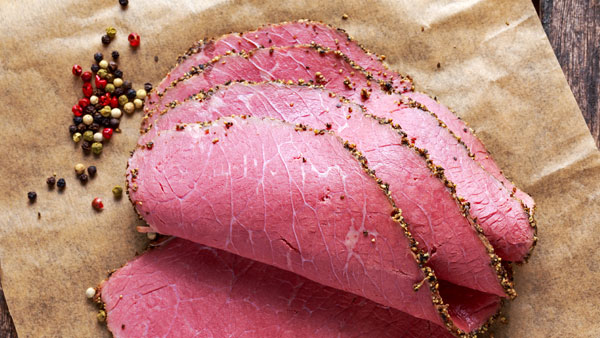
This stout-cured corned beef and cabbage recipe comes from Sean Paxton (aka The Home Brew Chef) and originally appeared on his website HomeBrewChef.com.
The brine incorporates a few pints of your favorite stout beer, which is a great way to work some of your homebrew into a St. Patrick’s Day dish. If you don’t have any homebrewed stout on hand, get planning for next year (check out our selection of homebrew stout recipes) and use one of your favorite commercial beers instead. The Home Brew Chef shares some of his favorite stouts at the end of the recipe.
Visit Paxton’s website for more Irish menu ideas.
| Servings | Prep Time | Cook Time | Passive Time |
| 1 large corned beef | 20 minutes | 2.5 hours | 5–8 days |
Ingredients
Stout Cure/Brine Ingredients
- 1.5 quarts water, filtered
- 2 pints stout beer
- 2 cups salt, kosher
- 1/4 cup sugar, organic
- 1/4 cup sugar, light brown
- 1 ounce pink salt (sodium nitrate) from Savory Spice Shop
- 1 teaspoon black peppercorns, whole
- 1 teaspoon coriander seeds, whole
- 1 teaspoon cloves, whole
- 1 teaspoon black or yellow mustard seed, whole
- 1 teaspoon grains of paradise, whole
- 1 teaspoon allspice berries, whole
- 1 teaspoon green or black cardamom pods (optional)
- 1 teaspoon star anise, whole (optional)
- 1 teaspoon caraway seeds, whole (optional)
- 1 teaspoon orange zest (optional)
- 1 teaspoon red pepper flakes
- 7 bay leaves (preferably fresh), bruised
- 3 garlic cloves, peeled
- 2 cinnamon sticks
- 2 quarts (4 pounds) ice
- beef brisket, whole, about 5 pounds
Cooking Ingredients:
- 2 pints stout beer
- water, enough to cover the meat by 2 inches
- 1 teaspoon black peppercorns, whole
- 1 teaspoon coriander seeds, whole
- 1 teaspoon cloves, whole
- 1 teaspoon black or yellow mustard seed
- 1 teaspoon grains of paradise, whole
- 2 green cabbage heads, quartered
- 5 carrots, large, peeled and quartered
- 6–8 red bliss or Yukon gold potatoes, washed and peeled
- 1 yellow onion, peeled and sliced
- 5 garlic cloves, peeled and sliced
Serving Sauces Ingredients:
Instructions
Stout Cure/Brine Directions
- Rinse off the beef brisket to remove any of the juices and small pieces of fat.
- In a large stock pot or 12-quart Dutch oven, add the water, stout beer, salt, sugars, and pink salt (if using), and turn heat to medium.
- In a sauté pan over medium heat, add peppercorns, coriander, cloves, mustard seed, grains of paradise, allspice berries, and (if using) cardamom pods, star anise, and caraway seeds.
- Mix with a wooded spoon until the spices start to pop and release their essential oils (you should smell all the spices).
- Remove from the heat and add to the water/beer mixture. Add the orange zest, red pepper flakes, bay leaves, garlic cloves, and cinnamon sticks to the water/beer mixture. Alternatively, you can purchase store-bought pickling spices or create your own mix and use about 3 tablespoons. I like to create my own mix, which is what I just described.
- Bring the brine to a boil for about 5 minutes. This dissolves the salts and sugars while infusing all the flavors like a tea. Turn off the heat and add the ice to chill the mixture.
- Check the temperature of this mixture to make sure that it is below 38° F | 3° C, or chill in the refrigerator until that temperature is reached. Transfer the stout brine to a Cambro 8 qt. Polypropylene Food Storage Container or zip-top bag and add the brisket.
- If using a container, add a small plate to the top of the brisket to make sure the beef is completely submerged. Seal the container with its red lid.
- Place in the refrigerator or kegerator for 5–8 days to fully cure the brisket. A larger brisket will take longer to cure. The long the brisket cures in the stout brine, the more flavor it will pick up.
- Remove the brisket from the brine and rinse well to remove any of the whole spices. Notice how the color changes, not only from the dark stout, but also from the brine. The corned beef should feel firmer than when it was just raw meat.
Option 1: Slow Cooker Cooking Directions
- Remove the now-corned beef and place it in your slow cooker. Add the stout beer and enough water to just cover the corned beef.
- In a sauté pan over medium heat, add peppercorns, coriander, cloves, mustard seed, and grains of paradise. Stir the spices until they start to pop and become very aromatic (about 3 minutes). Add the toasted spices to the brisket and cover with a lid.
- Most slow cookers have two temperature settings. If you use the low setting, set the timer for 8–9 hours. The low temperature, which varies depending on the brand and manufacturer, can range from 190–200° F | 88–93° C. This is very similar to the temperature at which you would sous-vide cook a brisket. During the last 45 minutes of cooking, add the potatoes, carrots, onion, and garlic. In the last 20 minutes add the cabbage. For the high temperature setting, 290–315° F | 143–157° C, the corned beef will take around 3.5–4.5 hours to be tender and fully cooked. Add the potatoes, carrots, onion, garlic, and cabbage during the last 30 minutes of cooking.
Option 2: Sous Vide Cooking Directions
- In a sauté pan over medium heat, add peppercorns, coriander, cloves, mustard seed, and grains of paradise. Stir the spices until they start to pop and become very aromatic, about 3 minutes. Add the toasted spices to a bowl to cool.
- Place the corned beef into a large bag, or split the corned beef into pieces that will fit in the bags you have (even individual serving sizes). If you have a chamber-style vacuum sealer, add enough stout beer to barely cover the meat, then add the spices, dividing among the number of bags. Seal on high.
- If you have a Seal-a-Meal®, FoodSaver®, or similar style vacuum sealer, first freeze the stout beer in ice cube trays overnight. Then add the ice cubes with the cured meat and divided amount of spices and seal. This will keep the beer in the bag so that it is not sucked out and into the machine when sealing.
- Set the water bath temperature to 180° F | 82.2° C. Place the sealed corned beef into the water bath and set the time for 8 hours. I have experimented with other temperatures and cooking times in trying to achieve the most tender corned beef. I tried 136° F | 57.7° C and cooked for 72 hours (3 days). This yielded a pretty tender, medium-rare corned beef that didn’t fall apart. It sliced well, and was more tender the thinner the meat was sliced.
- For the vegetables: Vacuum seal the potatoes and carrots separately, adding a few tablespoons of butter and seasoning with a sprinkle of salt and pepper. Add the bags of potatoes and carrots after the meat has cooked for 7 hours. The potatoes and carrots will take about an hour to fully cook. For the cabbage, first sauté the sliced onions in butter over medium heat until they turn transparent, about 5 minutes. Add the sliced garlic and cook another minute. Then add the cabbage (slice for this version, removing the core), stir to coat the cabbage in butter, and sauté until the cabbage turns a bright green color, about 4–5 minutes. Season with salt and pepper, and it’s ready to serve.
Serving Directions:
- When ready to serve, remove the corned beef from the cooking pot and transfer it to a large cutting board. Slice the meat across (perpendicular to) the grain to make the corned beef more tender. If you cut the corned beef with the grain, it will be noticeably tougher. Place the sliced meat on a serving platter and add/arrange the strained vegetables. Use a few tablespoons of the cooking liquid to moisten the meat for presentation.
- To enhance this classic feast, serve with clarified butter infused with a clove or two of peeled garlic, Mustard Ale Sauce, and/or Horseradish Ale Sauce.
Recipe Notes
Beer Suggestions: A stout seems so fitting for this feast. A few classic brews that work extremely well for this recipe are Samuel Smith’s Oatmeal Stout, Guinness Stout, Anderson Valley Brewing Co. Barney Flats Oatmeal Stout, or a homebrewed dry Irish-style stout. Make sure you have enough to serve with the meal as well.
Pink salt or sodium nitrate will help preserve and cure the meat. It is what keeps the brisket pink and prevents it from turning a muddy grayish color when boiled. Pink salt can be found at Savory Spice Shop. It is also used to make bacon, pancetta, hams, some sausage styles, and other cured products. If you have issues with nitrates, you can omit the pink salt from the recipe.
The post The Home Brew Chef’s Stout-Cured Corned Beef and Cabbage Recipe appeared first on American Homebrewers Association.


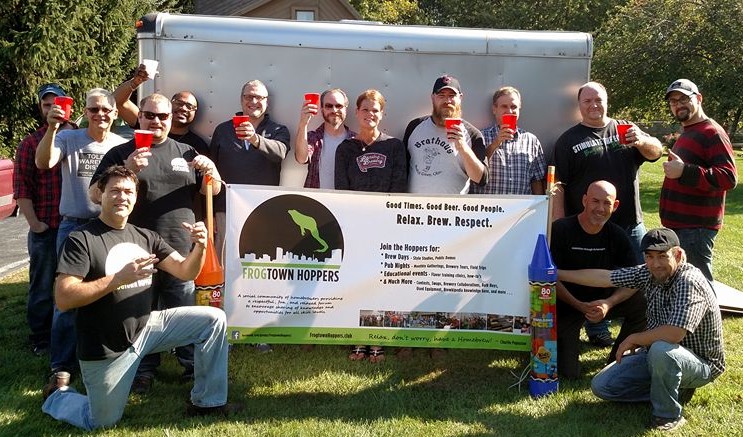

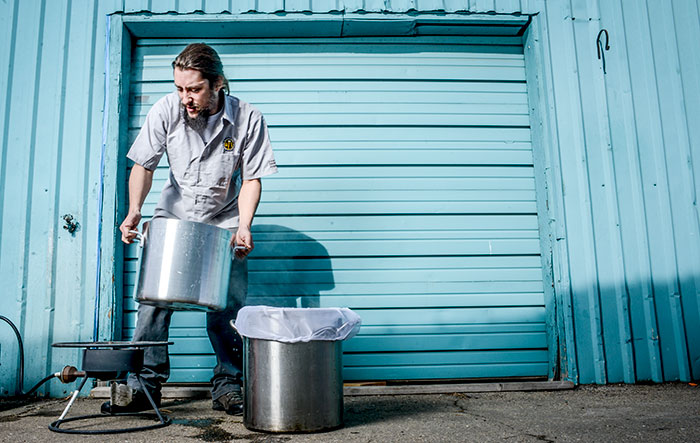
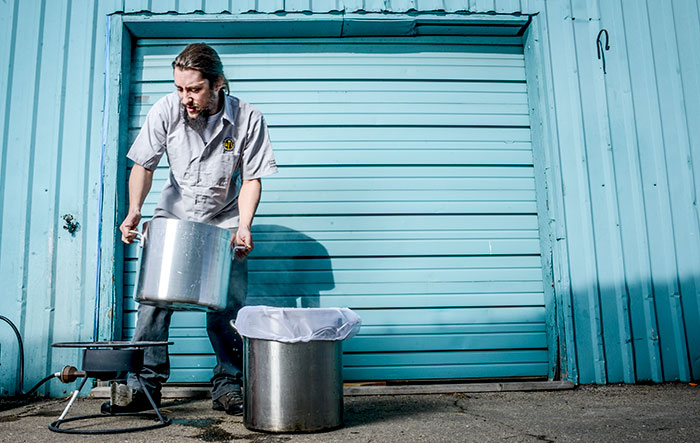

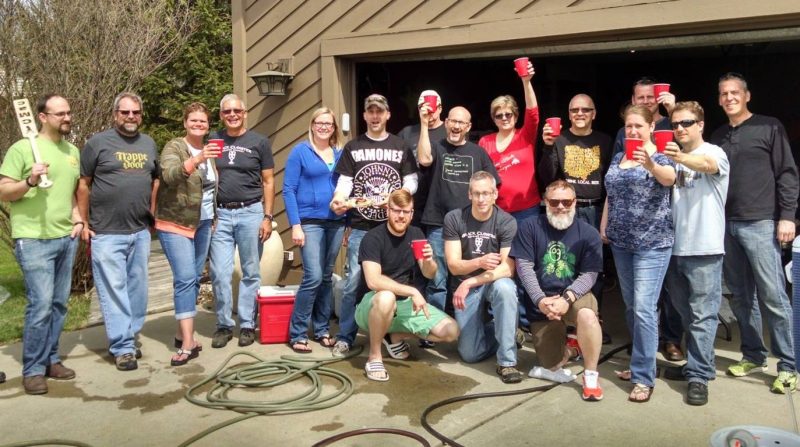

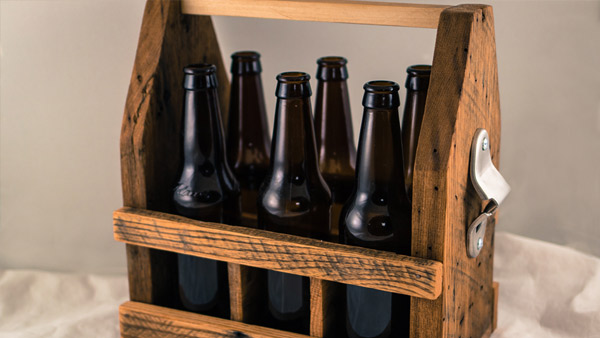

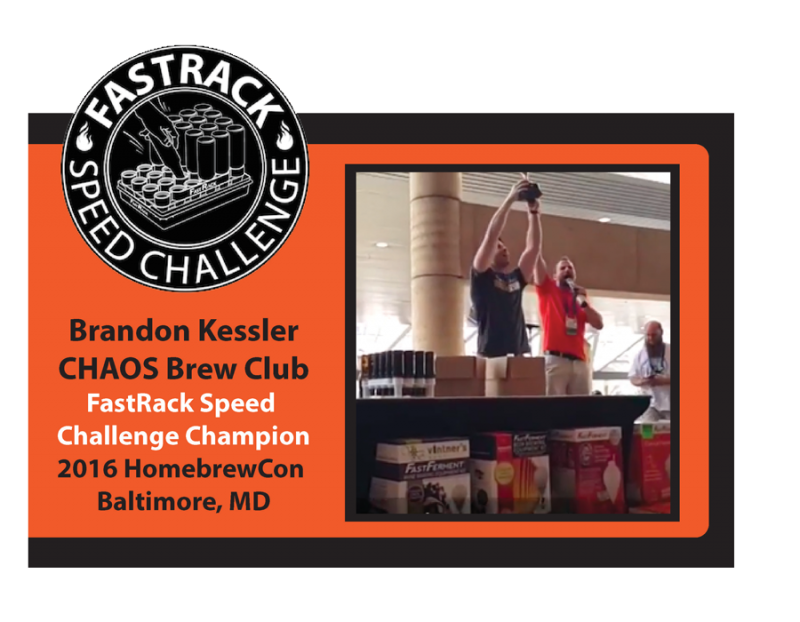


 An excerpt from Queen of the Turtle Derby and Other Southern Phenomena by Julia Reed
An excerpt from Queen of the Turtle Derby and Other Southern Phenomena by Julia Reed
 We have everything you will need for the rest of your weekend after completing your 1K Fun Run.
We have everything you will need for the rest of your weekend after completing your 1K Fun Run.